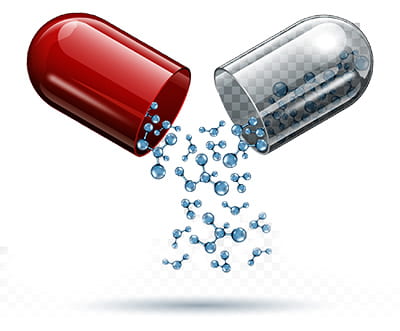Regulation on Pharmaceutical Industry in the UK
 Imagine that you are an entrepreneur in the pharmaceutical industry having recently made a scientific breakthrough in a critical field. Your first instinct is to get this breakthrough certified and licensed, so it can be manufactured and sold to the masses who require it. You approach ‘Authority A’ only for them to tell you to get approval from ‘Authority C’ first. While trying to get approval from ‘Authority C’, the lack of required documentation from ‘Authority B’ causes the application to be rejected. The lack of the technical know-how of how to go about with this process makes it seem like a very expensive, daunting and confusing task, making you nearly reach the point of not going through with it. The seemingly complex nature of multiple regulations can appear this way to countless individuals, whereas in reality, it is merely a straightforward and structured path that has been set up to follow. This article aims to provide a guidance for the same by explaining in detail how simple the regulations that govern the pharmaceutical industry are.
Imagine that you are an entrepreneur in the pharmaceutical industry having recently made a scientific breakthrough in a critical field. Your first instinct is to get this breakthrough certified and licensed, so it can be manufactured and sold to the masses who require it. You approach ‘Authority A’ only for them to tell you to get approval from ‘Authority C’ first. While trying to get approval from ‘Authority C’, the lack of required documentation from ‘Authority B’ causes the application to be rejected. The lack of the technical know-how of how to go about with this process makes it seem like a very expensive, daunting and confusing task, making you nearly reach the point of not going through with it. The seemingly complex nature of multiple regulations can appear this way to countless individuals, whereas in reality, it is merely a straightforward and structured path that has been set up to follow. This article aims to provide a guidance for the same by explaining in detail how simple the regulations that govern the pharmaceutical industry are.
In the UK, the pharmaceutical industry is primarily governed and regulated by the Department of Health and Social Care (DHSC). The primary objective of the department is to improve the quality of care through the issue of guidelines and policies that are to be followed by all personnel and establishments involved. The legislation adhered by the DHSC is:
- The Medicines Act, 1968
- The Poisons Act, 1972
- The Health and Social Care Act, 2008
- The Pharmacy Order, 2010
- The Human Medicines Regulations, 2012
The Department of Health and Social Care oversees 15 bodies that help provide healthcare-related services across the United Kingdom. With respect to pharmaceuticals, there is an executive agency under the DHSC, known as the Medicines and Healthcare Products Regulatory Agency (MHRA) which is responsible for regulating and assessing medicines and devices. The General Pharmaceutical Council established using the Health and Social Care Act 2008, is an independent statutory regulator which regulates pharmacists, pharmacy technicians and pharmacies.
Regulations on Medicinal Products
The Human Medicines Regulations, 2012 govern medicinal products across the UK. As per the guidelines, only an individual with a license may manufacture, import or distribute medicinal products. The MHRA is the competent authority to grant such permissions and has the right to refuse any application if it deems to be appropriate. It also has the power to suspend or revoke licenses, if it thinks fit, on the following grounds:
- The information in the application was false.
- There is a material change of circumstances in relation to the matters of the form.
- The license holder has contravened any provisions of the license.
- The license holder fails to provide the competent authority with relevant information regarding the medicinal products of the license.
Regulation on Pharmaceutical Establishments
 Pharmaceutical establishments in the UK are regulated by the Medicines Act, 1968 and the Pharmacy Order 2010. The regulations require these establishments to acquire a license prior to setting up shop and prohibit anyone apart from the pharmacist who is responsible, from being in charge of the registered store. The establishments must comply with the guidelines set forth in the legislation, for which the registrar shall be the competent governing authority. Medical devices, on the other hand, are regulated by the MHRA.
Pharmaceutical establishments in the UK are regulated by the Medicines Act, 1968 and the Pharmacy Order 2010. The regulations require these establishments to acquire a license prior to setting up shop and prohibit anyone apart from the pharmacist who is responsible, from being in charge of the registered store. The establishments must comply with the guidelines set forth in the legislation, for which the registrar shall be the competent governing authority. Medical devices, on the other hand, are regulated by the MHRA.
Regulation on Medical Devices
The MHRA has issued a set of instructions that are to be followed for the registration and usage of any medical device in the UK market. The Medical Devices Directive (MDD), a directive issued by the European Union, describes a medical device as any instrument, apparatus or article that is used to diagnose, prevent, monitor, treat or alleviate diseases or injury, or investigate and modify a physiological process, or control conception. According to the MHRA, there are three types of medical devices, which are:
- Active Implantable Medical Devices: Powered/partial implants left in the human body.
- In Vitro Diagnostic Medical Devices: Equipment intended to use in vitro to examine specimens from the human body.
- General Medical Devices: Devices that usually relate to other medical devices.
Depending on the level of risk associated with them, medical devices are given the following classification:
- Class I (regarded as low risk)
- Class IIa (regarded as medium risk)
- Class IIb (regarded as medium risk)
- Class III (regarded as high risk)
Once it has been established as to how the medical device will be classified, it is required to go through a conformity assessment as set out by the MDD. All classes of medical devices are required to have a declaration stating that the requirements set out in the MDD are met and inform the competent authority, in this case, the MHRA, in order to get approval and certification for the same.
National Healthcare System and Funding
The United Kingdom has a national public healthcare policy in the form of the National Health Service (NHS), an executive public body under the DHSC. The range of services offered by the NHS covers every aspect of healthcare, including medical services from general practitioners and medical treatment in NHS hospitals (for both emergency and non-emergency cases). There also exists a private health insurance system within the UK, although a relatively lower number of people opt for this due to the range of services covered under the NHS. Patients opting for a private health insurance program have quicker access to specialists, can avoid long waiting times and can avail better facilities. The premiums for these private health insurance programs on the level of coverage the person has enrolled for, their age and lifestyle, and any pre-existing medical condition.
Within the UK, there are two arrangements of pricing that exist for medicinal products. They are:
- The Voluntary Scheme for Branded Medicines Pricing and Access
- The Statutory Scheme
The Voluntary Scheme for Branded Medicines Pricing and Access is a voluntary agreement that exists (DHSC) and the Association of British Pharmaceutical Industry (ABPI). This scheme is applicable only within the NHS and aims to give the NHS access to good quality medicines at a reasonable price and at the same time, allowing the body to research and develop improved drugs. The decision to change prices lies with the DHSC upon evidence that suggests a need for the same in order to preserve an economical supply of drugs. Another way in which a member of the Voluntary Scheme can initiate a price change is if their assessed profits exceed the 'Return on Capital' percentage of 21%, by 50%. If such is the case, then the member reduces prices by an equivalent amount. If the member's profit exceeds 50%, but from below 21%, then they are entitled to a price increase.
The Statutory Scheme of regulating the price of medicinal products is governed by the Branded Health Service Medicines (Cost) Regulations, 2018. According to the regulations, manufacturers are required to pay a rebate to the DHSC at a fixed percentage, which initially was at 7.8%, but subsequent amendments set the rates at 9.9%, 14.7% and 20.5% for the year 2019, 2020 and 2021. The Statutory Scheme can further establish a maximum price for a specific drug, at the discretion of the DHSC.
Regulation on Clinical Trials
Clinical trials are a critical part of any pharmaceutical product. In order to conduct clinical trials of medicinal products, there are a set of guidelines issued by the MHRA that must be followed. No clinical trial can be performed without prior authorization from the MHRA. An application for permission to conduct clinical trials must be submitted to the MHRA, while simultaneously getting an opinion from the Ethics Committee, which must be positive in nature. The application for clinical trials can also be submitted through the Common European Submissions Portal, which was created for the purpose of having a secure and straightforward mechanism to communicate with the regulatory authorities. Once the necessary approvals have been secured, the clinical trials can begin and are divided into 4 phases. It must be noted that only if a product passes the safety and effectiveness tests of one phase, can it go to the next one. The phases are as follows:
- Phase I: In-human trials. The product is tested on a small number of subjects and aims to find the lowest effective dose and the highest non-harmful dose.
- Phase II: The subject size is increased to several hundred who have a particular disease or a condition. This phase primarily finds out the common side effects and how the treatment is effective in more significant numbers.
- Phase III: The therapy is now spread across several thousand patients in order to gather detailed information, and the results are utilized for prescription and patient information.
- Phase IV: After the medicine has been licensed, trials continue in order to assess the long term harms and benefits of the drug.
Upon submission of the application along with the relevant documents, an initial assessment will be conducted within 30 days (14 days in the case of healthy volunteer trials and Phase I trials in non-oncology patients). The possible outcomes that can arise are either an unconditional acceptance for authorization of the clinical trial, or conditional approval for authorization of the clinical trial, or non-acceptance for authorization of the clinical trial with specific grounds. Applications which are not given approval are given a chance to amend and resubmit.
Medical devices, on the other hand, are required to a clinical investigation in order to obtain the CE marking before they can be used. An application must be made to the MHRA at least 60 days before the start of the investigation. Once the MHRA receives the request for an application that is supported by the necessary documents and upon payment of the fees, a reply will be sent within five working days regarding any issues with the form. Any problems that arise will only be cleared after a valid response is given, only after which the 60-day assessment will start. Either at the end of 60 days or before, a definite decision (either an objection or no-objection) will be given as to whether the clinical investigation can happen or not.
Parallel Imports
With regards to parallel imports of medical devices, the MHRA has issued a set of advisory guidelines that are expected to be followed. Once the medical device is in compliance with the CE standard of conformity, in accordance with the Medical Devices Directive, the importer will not be recognized as a parallel importer of the medical device unless:
- Repackaging and rebranding of the product are done in a different market.
- The medical device is modified in a certain way which is no longer covered by the initial CE standard of conformity
Regulations on manufacturing and marketing of medicinal products
The manufacturing and marketing of medicinal products in the UK are governed by the Human Medicines Regulations, 2012. Manufacturing is only allowed to those who have been issued a license for the same by the competent authority (MHRA). The holder of the manufacturing license must ensure that the manufacturing process must comply with Good Manufacturing Practice Directive set forth by the MHRA. Any manufacturing or assembling of medicinal products other than those specified in the license is prohibited, and the license holder must ensure that all staff, equipment and facilities provided at the place of manufacture are appropriate enough to maintain the quality of the medicinal products. In order to market the medicinal products in the UK, an application has to be made to the licensing authority specifying as to how the product would be marketed, i.e. on prescription, from a pharmacy or on general sale. The licensing authority must make a decision whether as to grant or refuse approval for marketing within 210 days from the date of application. Once the authorization has been given, the holder of the authorization must submit periodic safety update reports to the licensing authority. The licensing authority further has the following duties:
- Make public any such approval.
- Draw up and revise assessment reports with regards to the quality, safety or efficacy of the medicinal product.
- Include a summary of the assessment reports in a manner that is understandable for the general public.
The authorization for marketing is valid for an initial period of five years, which can be renewed for another period of 5 years subsequently. The MHRA has the discretion of revoking any such authorization if:
- The positive therapeutic effects do not outweigh the risks of the product to the public.
- The product is harmful.
- The product lacks therapeutic efficacy.
- The product composition is not in accordance with that on the application of authorization.
Pharmacovigilance
Pharmacovigilance is the practice of monitoring the effects a drug has once it has been authorized and licensed for marketing. In the UK, pharmacovigilance is regulated by the MHRA under the Human Medicines Regulations 2012. According to the regulations, the licensing authority is tasked with creating a creating and operating a competent pharmacovigilance system where suspected adverse effects arising from the use of medicinal products can be reported. The MHRA is empowered to take appropriate regulatory action it deems fit if any and must perform regular audits of its system. The authorization holder is obligated to ensure that it continuously has qualified persons at its disposal for the maintenance of the pharmacovigilance system. They are also tasked with monitoring the system to:
- Scientifically evaluate the product.
- Minimize and prevent risks associated with the product.
- Take appropriate measures whenever applicable.
The holder of the authorization is mandated to conduct periodic audits, make a report of the main findings and take an appropriate corrective action plan and implement it, whenever applicable.
All data in the pharmaceutical industry is governed and protected EU General Data Protection Regulation effective from May 2018. This coexists with the pharmacovigilance system that is present throughout the country.
Liability
The MHRA is regulatory authority for medicinal products across the UK and under the Human Medicines Regulations 2012, penalties in the event of a breach of obligations by the manufacturer can be imposed by the authority. License and authorization holders have extensive obligations that are to be fulfilled, especially with respect to pharmacovigilance and risk management. The regulations place that for defective medicines, distributors, sellers, and prescribing physicians can potentially be held liable. The provisions are further protected by the Consumer Protection Act, 1987 (CPA). As per the CPA, the liability of the damage lies with the producer of the product. There exists a limitation time period of three years from the date at which the cause of action occurred in order to file a tortious claim, as per the Human Medicines Regulations 2012. The CPA provides a further time period of ten years after the date of the action. The remedies that are usually given out are in the form of damage and is decided by the court after considering the circumstances of the claimant, in accordance with the guidelines issued by the Judicial College and precedents.
 The license and authorization holders can also be held criminally liable for any breach of obligations under the Human Medicines Regulations 2012, which can result in a possible conviction and fine, with the maximum time period of imprisonment not exceeding two years.
The license and authorization holders can also be held criminally liable for any breach of obligations under the Human Medicines Regulations 2012, which can result in a possible conviction and fine, with the maximum time period of imprisonment not exceeding two years.
Conclusion
The extensive regulations that govern the pharmaceutical industry in the UK are necessary to ensure that there is a fair practice in existence and the interest of patients and consumers alike are catered to and upheld. Without these regulations, it will be difficult to govern the ever-growing industry.
 Русский
Русский
 English
English 官话
官话 português
português عربي
عربي
 Türk
Türk 






.jpg)
















